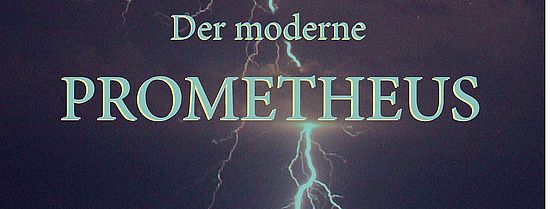
10.10.: Kollegienhaus, Hörsaal 120Hugues Marchal
Frankentexts: A Portrait of the Author as a Life Scientist
Mary Shelley’s creature is not only a powerful myth illustrating and questioning our capacity to manipulate life, it is also a strong meta-textual symbol. In the preface to Frankenstein, Shelley likens the genesis of the creature and the one of her novel: just like "the component parts of [her] creature" are stitched together, her work mixes ideas originating from discussions with various friends and she explicitly compares her own book to the creature, when she concludes: “I bid my hideous progeny to go forth and prosper. I have an affection for it, for it was the offspring of happy days”. This analogy takes place in a long history of structural comparisons between the text and the living organism, that go back to the Antiquity. However, Shelley subverts the classical use of the simile, according to which a text resembling a mixed, hybrid being and hence ignoring nature’s laws would be ill-composed and unviable. Her work marks a turning point: from then on, various writers have been able to legitimate their avant-gardist, risqué ways of composing and altering texts and even common language, at the risk of creating other literary monsters, by likening these practices to the experimental products of life scientists. What is more, modern and contemporary genetics have complexified the ontological status of the simile by blurring the boundaries between the metaphorical and the actual (DNA is commonly treated as a “code”, a “text” or a “library”, that can be “copied”, “deciphered”, “rewritten”), pathing the way for contemporary writers who prefer to call themselves “biopoets” (Eduardo Kac, Christian Bök) or “text-hackers” (Mathias Richard). Following and understanding this evolution calls for an interdisciplinary approach: here, the history of literature and the history of sciences interact in complex ways that cannot be reduced to a mere influence of science on literature. But this evolution also shows that literary works not only address new issues through their topics, but that their way of thinking and dealing with them is inseparably formal.
Hugues Marchal is Assistant Professor of Modern and Contemporary Literature at the University of Basel. He has taught in the USA at Johns Hopkins and Duke University, in Paris at University of the Sorbonne Nouvelle-Paris 3, where he also obtained his doctorate. His research interests include relations between poetry and science from 1800 to the present, especially relative to the limits between literary creation and other fields including poets who assimilate their books to bodies. He has published widely in this field, including Staunen als Grenzphänomen (Fink Wilhelm Gmbh 2017, ed. with Nicola Gess, Mireille Schnyder, and Johannes Barutschat), La Poésie (Flammarion 2007 (paperback 2012)), Muses et ptérodactyles : La poésie de la science de Chénier à Rimbaud (Seuil 2013), and La Poésie scientifique, de la gloire au déclin (Epistemocritique 2014, ed. with Muriel Louâpre and Michel Pierssens).
Quick Links
